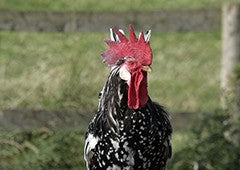Thinking of getting a new kitten for your feline family? Kittens are great fun, and it’s so wonderful to watch them grow and change into full-grown house cats.
If you already have another adult cat, you’ll have to take care to introduce their new furry pal - it’s not simply a matter of plonking them down and hoping for the best! Like when introducing dogs and chickens, owners need to take care when introducing two felines.
1. What you need to consider before introducing kittens and cats
There are a number of different things you need to consider before you introduce the animals and before you pick the new kitten that’s joining your furry family. These are essential to ensure a transition for your older cat that’s as smooth as possible.
-
gender
There are certain gender couplings that are better than others. For example, two females will get along far better than two males, who will probably try and assert their dominance and show aggression towards each other. A male and female pairing can also be peaceful, as long as you have BOTH cats desexed - otherwise you might have an unexpected litter of kittens on your paws!
-
the breed
When choosing the breed of your kitten, try and aim for one that’s known to get along with well other animals. (Also, choosing one that’s a similar temperament to the cat breed you’ve already got is a good idea - pairing a boisterous, affectionate breed with a reserved, shy cat is usually a recipe for friction). Cat breeds such as Persians, Ragdolls and Maine Coon’s are known to be calm and friendly towards other animals.
-
always keep in mind the age...
It’s always a good idea to keep in the back of your mind the difference between kittens and cats. Kittens are young and chock full of bouncy energy, whereas older cats like to laze around and do what they please. So you can imagine, a younger, bouncier cat constantly annoying them may not be taken lightly!
2. Setting the scene
So, you’ve picked up your perfect kitten - now, how exactly do we go about introducing our new feline friends? Well, it’s a calm, step-by-step process.
-
Things to consider beforehand
You should bring home your cat when the household is calm, and you have ample time to monitor both animals to ensure a safe transition. Also, you need to be there to help the kitten adapt to their new home - moving house is a big deal for such a small animal!
Introducing the scent
Also, something you should do before a fur-to-fur introduction is to help your existing cat become accustomed to the smell of the new kitten. Familiar scents, for cats, plays a very important role on how comfortable the animals are with each other.
You can make your cat familiar with the kittens new scent by rubbing the kitten with a towel, and then placing it in spots you know your existing cat regularly visits such as its bed.
A portable cat crate or pen
When introducing a new kitten, it’s a good idea to let the cats see, sniff each other’s scents and observe each other through the safety of an enclosure. Having a pen that’s large enough to fit a food and water bowl, as well as some toys for our playful kitten, can help ease the transition into home life.
-
The first introduction
After your kitten has had the chance to become accustomed to their new surrounds in the playpen, and your older cat has become familiar with their scent, it’s time to introduce the two face-to-face.
When first letting the cats see each other without any barriers, keep a close eye on them in case one of them takes a swipe, or they need to be temporarily separated. Don’t expect them to become best buds right off the bat - that would be pretty lucky! Realistically, the older cat will probably hiss and show a little disharmony towards the kitten, however this should pass once they’ve adjusted to one another.
3. What to do for the first few weeks
For the first few weeks, you’ll probably have to keep the cats separate and then reintroduce them as they adjust - always supervising their together time.
When you're confident that your cats can be allowed to roam the house together long term, you can leave them out. Just make sure that there are lots of toys around for your kitten to play with, and that their food and water are in separate bowls. They should have their own space to chill out and eat in peace!
After a while if all is well, then you can leave them unsupervised until you feel satisfied that the two cats have adjusted to their environment, and to each other.
Things to keep in mind...
-
Don’t forget to keep cuddling your current cat!
It’s easy to get wrapped up in the excitement of a new kitten - how playful and cute they are! However, it’s important to keep lavishing your current cat with affection and scratches, otherwise they may become jealous of the new addition.
-
Don’t expect your existing cat to act like a parent towards your kitten
You might have visions of your older cat acting as a mentor and parent to your young kitten - this will probably not be the case. Most domesticated cats have never even seen another kitten before, plus are desexed - so don’t have much, if any motherly instinct.
You can definitely introduce a new cat to kittens, if you're mindful of both cats needs and are there for the first stage to ensure they’re getting along swimmingly. It’s also good for each cat to have their own private space to retreat to, for some quiet time to themselves!
If you are looking for a pen to keep your kitten in during the transition, or want somewhere secure and comfortable to keep the cats safely sleeping at night, you should have a look at our range of cat enclosures such as the Paws Parlour, Kitty Kastle and Purrfect Palace.



















